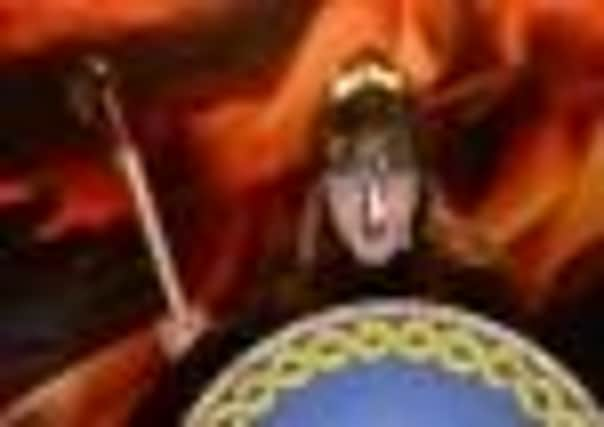Crack the Norse code: New exhibition shows ‘untold’ side of Viking life


But a new exhibition in the Capital is set to challenge the stereotype of the blood-thirsty Viking and show a whole new “untold” side of their lives.
The National Museum of Scotland is hosting a unique display consisting of more than 500 objects – including jewellery, weapon fragments and household items – which are rarely seen outside Scandinavia. The collection – named simply, Vikings! – aims to paint a picture of domesticity, creativity and ingenuity rather than one of blood, gore and murder.
Advertisement
Hide Ad“Most will be familiar with popular portrayals of fearsome pillagers with a thirst for battle and those famous horned helmets,” explains Martin Goldberg, curator of early historic and Viking archaeology at National Museums Scotland.
“Those helmets are a fiction, a cliché with little or no basis in historical fact, and perhaps that reflects the main point that the exhibition makes – we are much less aware of who these people really were, where they came from and how they lived.”
In fact, as Mr Goldberg points out, the term ‘Viking’ is actually a modern invention of 19th century Scandinavian scholarship and should not be used to refer to a race or a people but rather to an activity.
Men – and perhaps even women and adolescents – would go out ‘on a Viking’, which could be the sort of pillaging raids depicted in the stereotype, but it could also refer to a more peaceful trading expedition.
“I think people will see that there are a lot of stereotypes that we have about the horned helmet etc and realise that there’s a lot more because archaeology is accumulating evidence all the time.
“For example, there’s a type of ice-skate that’s made out of a particular cattle bone, used for skating across frozen lakes as it would have been quicker for them to get about.
Advertisement
Hide Ad“We wouldn’t normally get that home aspect of the Viking story.”
The exhibition is made up of a host of interactive displays and features, including a virtual dig at a boat grave, a digital Viking wardrobe, and the chance to learn about runes, listen to Viking sagas and have a game of Hnefatafl, an aristocratic Viking board game of military strategy.
Advertisement
Hide AdExcavations from individual grave sites are amongst the highlights of the collection.
Mr Goldberg, points out the story of a male who was buried with all his weapons, and naturally it was assumed he was a warrior.
However, on further examination, it was discovered the remains were those of a boy, aged between eight and 13, who was learning to become a warrior but still had the muscles of an infant.
“It’s little stories like this that will appeal to people, especially children,” Mr Goldberg adds.
Other interesting artefacts, in particular jewellery and sculpture, show the skills of the Norse craftsmen and how well travelled they were, with material and designs revealing connections from Britain and Ireland to the Baltic and the Black Sea.
Amulets and statuettes provide evidence of a variety of cults and rites that honoured a pantheon of both male and female gods.
Advertisement
Hide AdThe Viking age was also a time of religious change as Christianity began to take root.
Amongst the Christian relics on display will be the oldest surviving Swedish crucifix, from the ninth century.
Advertisement
Hide AdHistorian and broadcaster Neil Oliver, who presented a recent documentary series on Vikings and wrote an accompanying book, says: “The Viking age has been much misunderstood and even perhaps misrepresented in our history.
“In recent years, new archaeological finds and scientific advances have enabled us to learn a lot more, which was one of the main catalysts for my TV programme and the book.
Mr Oliver will give a lecture at the Chamber Street museum - which is the only UK venue for Vikings! - next month as part of a programme of events running to coincide with the collection.
As part of the exhibition, the venue will also be holding a number of family-friendly events starting next month.
The first free drop-in workshop takes place on February 9 and 10 from 12-4pm where families will get the chance to design their own Viking and shield to add to the museum’s fleet of longboats, with artist Jon Hodgson.
Other activities include Viking War Games on March 10, a living history group called The Glasgow Vikings on February 17, and a weekend of Viking activity on May 4 to 6, featuring music and a family show.
Advertisement
Hide AdGunnar Andersson, senior curator of the exhibition from the Swedish History Museum, adds: “Scotland has a long-standing connection with Viking history, and we are looking forward to bringing this exhibition to its National Museum.”
• The exhibition runs until May 12. For more information, ticket prices and event times, visit www.nms.ac.uk/vikings.